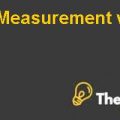
USAA: Catastrophe Risking Financing Case Solution
- Describe the structure of Class A-2 and Class A-1 securities.
The Class A-1 and Class A-2 bonds are considered as the Catastrophe bonds, and the structure of such type of bonds is normally different from the standard bonds as CAT bonds are issued by the special security or special purpose vehicle. The basic purpose of the CAT Bonds is to insure the risk of losses that insurance companies could bear at the time of the catastrophic event. Therefore, the structure of CAT bonds is different from the structure of normal or standard bonds. Both Class A-1 and Class A-2 bonds have characteristic of special purpose vehicle, however, the structure of the structure of both bonds is slightly different from each other as Class A-1 bond provides security with the help of collateral account and provides insurance amount on variable and protected basis, which acts as a contingent in case of catastrophic event while Class A-2 bond involves only principle variable amount.
The Class A-1 security is rated as AAA bond due to its protected facility whereas,Class A-2 bond is rated as BB bond. Both securities have been categorized by the famous and reliable credit rating agencies such as S&P and Moody's.
- Why do you think Class A-1 securities were created?
The rating of the Class A-2 security is BB, which means insurance companies are facing greater risk while investing in BB-rated bond. Therefore, in order to provide greater security to insurance companies upon the reinsurance contract, Class A-1 bond has been created with the facility of both protected and the variable amount. In addition to this, the rating of Class A-1 bond is AAA and the rating of these bonds performed by the famous credit rating agencies. Hence, the main purpose of the introduction of the Class A-1 bond is to provide greater security to insurance companies against losses, which insurance companies might face in the catastrophic event.
- Compute the price of reinsurance for layers 2, 3, and 4
| ROL and price Calculation for layer 2 | |||
| Premium Paid: | $16.90 | ROL of Layer 2: | 12.50% |
| Limit: | 90%*(600-450) | Actuarial Prob. of Loss > $450mm: | 4.50% |
| 135 | (from graph in Exhibit 4) | ||
| Premium / Limit | |||
| ROL: | 12.52% | ||
| Price: | 1.8 | ||
| ROL and price calculation for layer 3 | |||
| Premium Paid: | $15.00 | ROL of Layer 3: | 10.00% |
| Limit: | 75%*(800-600) | Actuarial Prob. of Loss > $600mm: | 2.50% |
| 150 | (from graph in Exhibit 4) | ||
| Premium / Limit | |||
| ROL: | 10.00% | ||
| Price: | 3.0 | ||
| ROL and price calculation for layer 4 | |||
| Premium Paid: | $6.60 | ROL of Layer 4 | 5.50% |
| Limit: | 60%*(1000-800) | Actuarial Prob. of Loss > $800mm: | 1.50% |
| (from graph in Exhibit 4) | |||
| 120 | |||
| 120 | |||
| Premium / Limit | |||
| ROL: | 5.50% | ||
| Price: | 2.7 | ||
Why is ROL typically lower for higher levels?
ROL is considered as the cost of protection which insurance companies pay for the reinsurance contract.It is calculated by using the premium values and the value of limit, which insurance companies can use as a contingent as a result of catastrophic events.
The value of ROL will be lower at the higher level of the layer as the value of premium will be low at the higher level, and the value of limit will be high due to the less likelihood of the occurrence of the event. In addition to this, at the higher level of layer, the value of the limit will be high as at the layer five, the value of limit is expected to be $400 million. Therefore, increase in the value of limit and decrease in the value of premium at a higher level of the layer is also one of the reasons behind the lower value of ROL at a higher value of layer..........................
This is just a sample partial case solution. Please place the order on the website to order your own originally done case solution.













